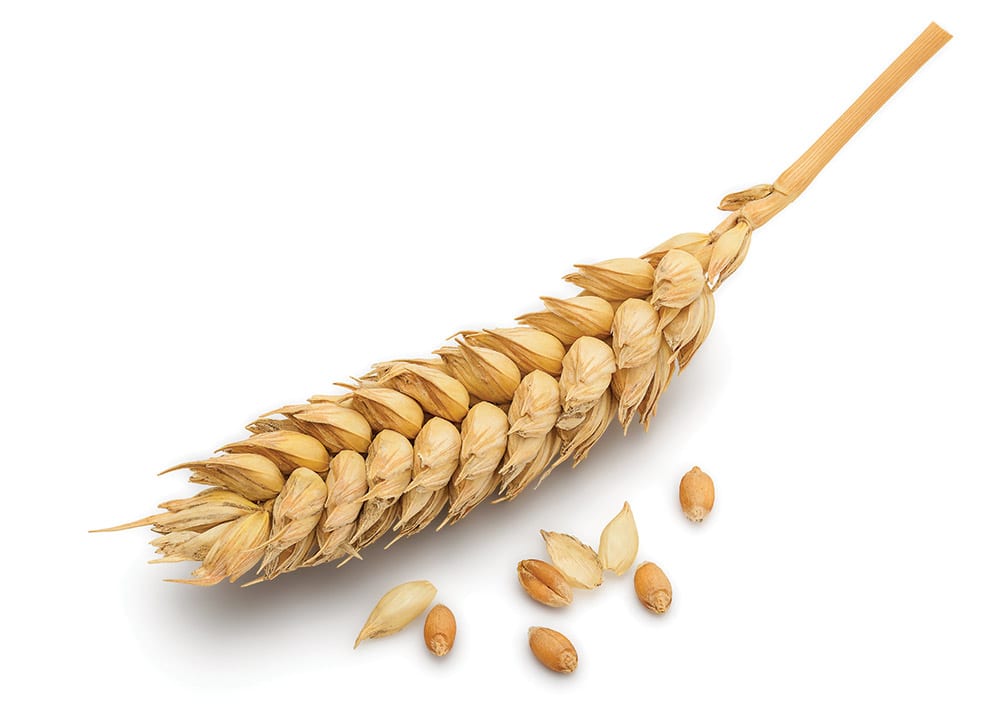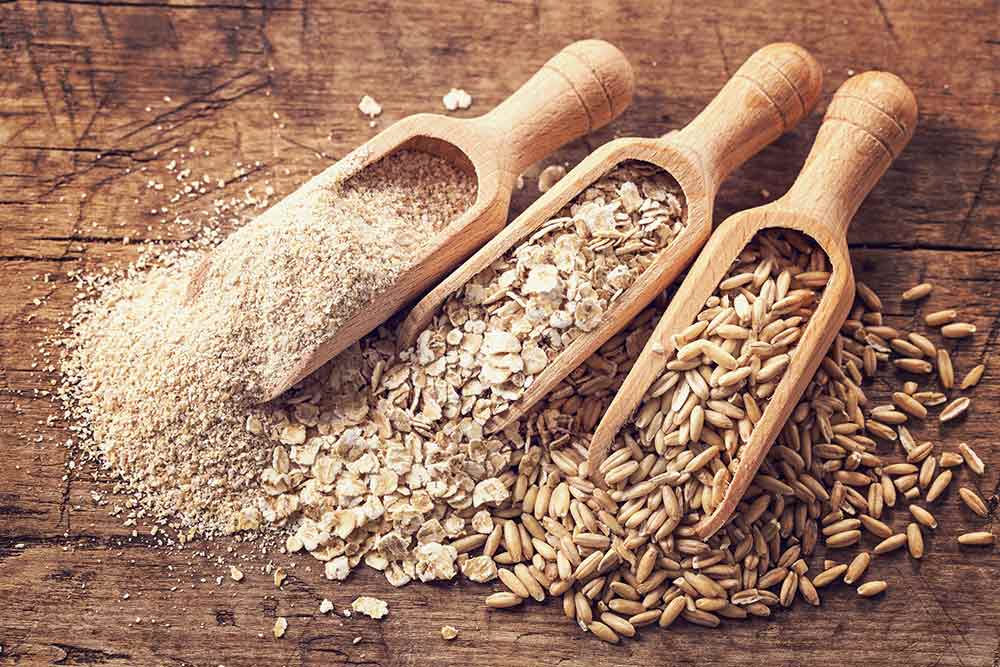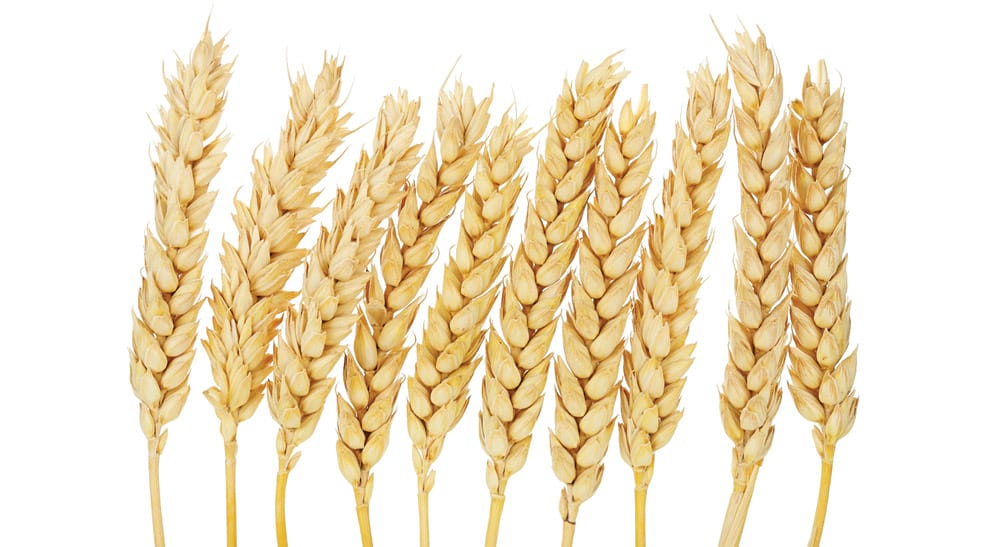By Lacey Dunn | Published on September 22, 2017
Always controversial and divisive (depending on your diet), here’s hard science on the softer side of nutrition.
One of the biggest controversies regarding carbohydrates lies within the power of the grains you eat. Are they good for you? Are they bad? The great debate divides agitators into opposite camps, from the paleo exponents to the flexible dieting community. Both stand their ground, picking and choosing their scientific evidence based on their opinions, and this is where our answer lies, for science never lies.
With “Gluten-free,†“Grain-free,†and “Wheat-free†labels continuing to dominate supermarket shelves, you must decide if these ingredients are ones to fear or love, decipher what these labels mean and understand how grains effect our health, performance, and physique goals.
By digging into the literature, you can help dissipate controversy and spread scientific truth: that grains are, quite possibly, glorious.
When implemented in the right types and amounts, they can be an important part of any diet which makes you look good and feel better.
Dissecting the grain
One of the key contributing factors to the confusion of the grain lies in the fallacy of composition. This occurs when someone infers something is true of a whole, when in fact it is true of some part of a whole. In the case of the grain, the entire grain is either judged as good or bad, and not broken down into its component parts.
Grains are categorised into two different types: whole or refined. Whole grains contain the entire kernel, which includes the bran, germ, and endosperm. The germ is responsible for most nutrients, phytochemicals and healthy fats, while the bran is an excellent source of fibre, B-vitamins and minerals. Whole grain examples include oatmeal, brown rice, wholewheat flour, breads, and bulgur.
Refined grains occur when the bran and germ have been removed through milling. This process not only alters the grain’s nutrient profile, but changes its effects on blood glucose and digestion within your body. Many refined grains are enriched with various vitamins and minerals to retrieve nutrients lost in milling, or add additional nutritional benefits to the product. Examples of refined grains include certain breakfast cereals, white bread, flours and rice, and many desserts and pastries.
Wholewheat and refined grains metabolise quite differently in the body and their digestion is also influenced by a meal’s total dietary components. For example, the fibre within the bran of whole grains helps to slow digestion of starch into glucose, helping maintain steady blood sugar levels. The fibre also helps lower blood cholesterol and remove waste within the digestive tract, including excreting excess oestrogen.
Refined grains tend to have less fibre and spikes blood glucose at a faster rate, which causes issues for individuals who struggle with blood sugar control or insulin resistance. When digested along with a fat source however, the fat works to slow digestion and helps to stabilise blood sugar levels.
Many exercisers will try to stay away from refined grains, but people tend to forget they must look at the bigger picture, which is the entire meal. When looking at the response on blood glucose and insulin, every component must be considered since digestion and absorption can change based on a meal’s full composition.
Just spiking insulin as well is not a fate for fat gain, for it triggers the uptake of nutrients into the muscle and allows for growth and repair to occur. Insulin is stimulated by both carbohydrates and proteins and serves as a light switch for our bodies to turn from catabolism to anabolism, storing glucose into our tissues for storage and future use.
The peaks and troughs

The case against grains lies in insulin resistance, food allergies, and inflammation. In insulin resistance, your body is not able to lower its blood sugar in response to insulin spikes. This is because the beta cells in the pancreas are not able to keep up with the increased demand for insulin, causing the glucose that would normally be shuttled to the liver or muscle tissue to stay within the bloodstream. Unless there is sufficient insulin to lower blood glucose back to normal, these levels remain elevated.
This continues a cycle of high blood sugar and weight gain, and can contribute to diseases such as polycystic ovarian syndrome (PCOS), Type 2 diabetes, and metabolic syndrome. To avoid insulin resistance and enhance insulin sensitivity, you should consume a balance of healthy, whole grains, avoid constant spiking of insulin, and focus on lifestyle and exercise, such as incorporating resistance training and HIIT cardio in order to enhance insulin sensitivity.
It is not the grain itself that causes insulin resistance, but a variety of genetic, lifestyle, and overall dietary factors. Maintaining a healthy bodyweight, exercising with resistance training and getting proper sleep are important steps to lower your risk for insulin resistance and improve your overall health.
Swelling evidence
Grains have also recently been perpetuated as a “cause of inflammation,†which is seen in the recent expansion of ‘gluten-free’ and paleo diets. Though some grains may cause some inflammation, it should be noted that for most individuals, this occurs due to dietary allergies, intolerance or improper digestion, and that inflammation is mostly seen with the intake of too many refined grains.
A gluten-free diet is essential for individuals with coeliac disease, in which the consumption of the protein gluten from grains causes an immune attack on their intestinal cells, leading to pain, damage, and various health effects. For someone with an unconfirmed allergy, disease, or intolerance, avoiding gluten is unnecessary and can even lead to nutritional deficiencies, create intolerances and spell trouble for desired weight loss.
Many gluten-free foods contain higher calories and carbohydrates, with less nutrients and fibre than their gluten-containing counterparts. Just because something is gluten-free doesn’t make it a healthier alternative or mean that it is lower in calories. It simply makes you aware the protein gluten is not there.
A gluten-free diet should only be implemented for medical reasons, and if you are specifically trying to reduce inflammation, they should focus on reducing refined grains, not avoiding the grain or gluten altogether. Various studies show refined grains high in sugar can contribute to inflammation, so limiting products such as breakfast cereals, fruit snacks and juices and many convenience packaged snacks can help reduce the risk of inflammation and ensure you focus on consuming carbohydrates with more nutritional calories.
– RELATED: White Bread May Be Just As Healthy As Whole Wheat Sourdough –
Halo-crusted nutrients

Looking at the benefits of the grain, whole grains consistently provide evidence for helping with weight loss, reducing the risk of chronic disease, and helping to maintain a healthy digestive system.
In a meta-analysis from the journal Circulation, it was found people who ate 70g a day of whole grains vs little to no whole grains had a 22% lower risk of mortality, 23% lower risk for cardiovascular disease, and 20% lower risk for cancer mortality. Annals of Epidemiology also established a large prospective study with over 72,000 postmenopausal women without diabetes and found a 43% reduction
in women with the highest whole grain intake compared to those with little to no whole grain intake.
Looking at the effects of whole grains on gut microflora, The American Journal of Clinical Nutrition concluded that diets rich in whole grains compared to refined grains lead to modest improvements in health gut microbiota and certain immune responses. Another tightly controlled study in the same journal assessed the direct difference of whole grains vs refined grains on metabolic rate and weight loss. They found that the whole grain group lost close to 100 calories a day extra due to a combination of faecal loss and increased resting metabolic rate. However, it should be noted that all studies have limitations and that physical activity was not tightly controlled, which could play a major role in the results.
Regardless, there continues to be emerging evidence in the literature praising the benefits of the whole grain. There is no doubt that its addition can help to increase satiety and dietary adherence, and play key roles in healthy cholesterol and blood glucose levels.
The final word
The controversy surrounding your source of gains from grains isn’t set to slow down any time soon. However, as with any exercise and dietary advice, the great grain debate comes down to the question of individual needs and variability in any one person’s nutritional intake.
One should make sure to consume an overall healthy, balanced diet and limit potential foods, including grains, that trigger individualised allergies, inflammation, and immune responses. An easy suggestion for your diet is to consume at least half of your carbohydrates as whole grains and, if looking to maximise insulin sensitivity, consume your simple, quick digesting carbohydrates around your workout times.
When looking to choose a whole grain product, you should focus on those high in fibre, vitamins, and minerals in order to get the most bang for your buck and to consume them within daily caloric needs.
The main focus of this debate tends to be: “go grains!†or “no grains!†Instead of focusing on limiting grains, the main focal point should always be on overall carbohydrate quality in your diet. Whether your goal is fat loss or gaining muscle, incorporating grains into your daily diet in the right varieties and amounts can help you to reach your fitness and physique goals while helping you live a long, fulfilled and healthy life.
Lacey is a bikini competitor and Bodybuilding.com athlete with a BSc in Dietetics.

